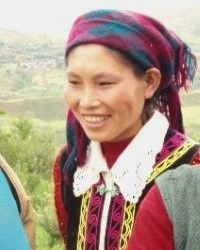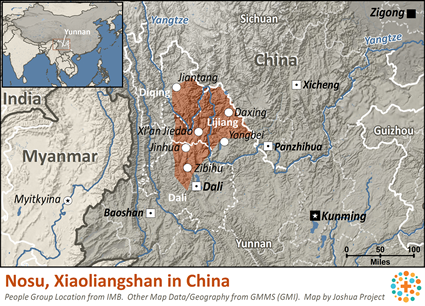Prior to 1949, the Xiaoliangshan Nosu practiced a system of slavery. Xiaoliangshan Nosu society is a complex system of castes, tribes and clans. In 1957, 80% of the Nosu were slave owners.
Today there are still class tensions and resentments from that bygone era. There are only a few Xiaoliangshan Nosu believers scattered over a widespread area.
The Xiaoliangshan Nosus are dedicated to ethnic religion.
These people may have little background needed to understand the gospel message.
Pray that Han Chinese believers would be motivated to build relationships with the Nosu, to befriend them, and to carry the gospel to them.
Pray for the Xiaoliangshan Nosu believers to find each other and fellowship together.
Pray they would replace any sense of class consciousness or inferiority with a confidence in their worth to God.
Pray they would live a life of love, just as Christ loved them and gave himself up for them.
Pray for the Lord to multiply the reception and influence of his word among them, leading them to love him with their whole being.
Pray for them to increasingly be made aware of who the creator God truly is and what he has done to provide forgiveness and an abundant life.
Scripture Prayers for the Nosu, Xiaoliangshan in China.
Operation China, Asia Harvest, Copyrighted Used with permission.
| Profile Source: Joshua Project |

























